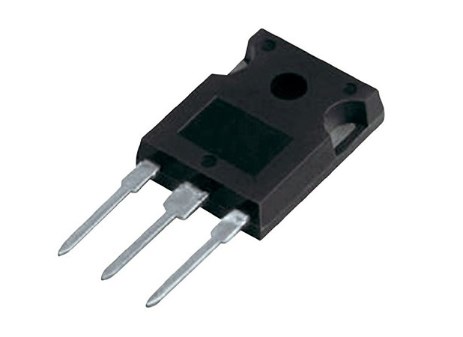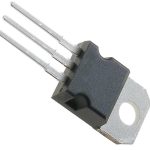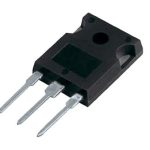Among the many choices, the TIP3055 and 2N3055 transistors have gained significant popularity due to their reliable performance and versatility. While both transistors are commonly used in power amplification and switching circuits, they possess certain differences that set them apart. This article aims to explore the TIP3055 transistor in comparison with the 2N3055 and discuss the circuit, equivalents, and pinout of TIP3055.
Brief overview of power transistors
Power transistors are electronic devices that are designed to handle high levels of electrical power. They are commonly used in applications where amplification, switching, and regulation of electrical signals are required. Power transistors are crucial components in various electronic circuits, including audio amplifiers, power supplies, motor control systems, and voltage regulators.
These transistors are capable of handling higher currents and power dissipation compared to small-signal transistors, making them suitable for demanding applications!
Importance of TIP3055 in electronic circuits
The TIP3055 is a widely used power transistor that holds significant importance in electronic circuits. It is a NPN silicon epitaxial-base transistor designed specifically for power switching and amplifier applications. The TIP3055 can handle a maximum collector current of 15A and power dissipation of up to 90W, making it suitable for medium to high-power applications. Its high current gain and low saturation voltage make it efficient in power amplification and switching operations.
Due to its reliability, cost-effectiveness, and availability, the TIP3055 has become a popular choice among engineers and hobbyists for various electronic projects!
Manufacturer and Supplier Information

The TIP3055 is manufactured by STMicroelectronics, a global semiconductor company known for producing a wide range of electronic components. STMicroelectronics is renowned for its quality and reliability in the industry. The TIP3055, along with other transistors and semiconductor devices, is readily available through authorized distributors, electronics retailers, and online marketplaces.
When sourcing the TIP3055 or any other semiconductor component, it is advisable to purchase from reputable suppliers such as Estar Trading to ensure product authenticity, traceability, and customer support.
TIP3055 vs. 2N3055
When comparing the TIP3055 and 2N3055 power transistors, several differences can be observed. Both transistors have similar capabilities and are often used interchangeably in many applications.
However, there are certain distinctions worth considering. The TIP3055 typically offers a higher gain and faster switching speeds compared to the 2N3055. This makes the TIP3055 more suitable for applications requiring faster response times. On the other hand, the 2N3055 has a higher maximum collector current rating of 15A compared to the TIP3055’s 10A.
Therefore, the 2N3055 may be preferred for applications that require higher current handling capabilities. Ultimately, the choice between these two transistors depends on the specific requirements of the circuit and the desired performance characteristics.
TIP3055 Circuit and Pinout
The TIP3055 transistor is commonly used in various circuit configurations. In its typical circuit arrangement, the TIP3055 is used as a switching device or as an amplifier. As a switch, it can control high-power loads, such as motors or relays, by turning them on or off. In amplifier applications, the TIP3055 can amplify electrical signals to drive speakers or other output devices.
The pinout configuration of the TIP3055 consists of three pins: the collector (C), base (B), and emitter (E). The collector is connected to the positive voltage supply, the emitter is connected to the ground or common reference, and the base controls the switching or amplification operation. The pinout and functions of each pin should be carefully considered when designing circuits using the TIP3055.
TIP3055 Datasheet
The TIP3055 datasheet is a valuable resource that provides detailed information about the transistor’s specifications and characteristics. It includes essential data such as maximum ratings, electrical characteristics, thermal properties, and recommended operating conditions. The datasheet also provides graphs and tables that illustrate the transistor’s performance under different conditions.
Availability and sources of the datasheet
The TIP3055 datasheet can typically be obtained from the manufacturer’s official website, such as STMicroelectronics. Additionally, reputable electronic component distributors and suppliers often provide datasheets as downloadable resources on their websites. It is recommended to consult reliable sources to ensure access to the most up-to-date and accurate version of the datasheet.
Key information provided in the datasheet
- This includes maximum ratings, such as voltage, current, and power dissipation limits, which ensure safe operation within specified parameters.
- Electrical characteristics, such as gain, saturation voltage, and cutoff frequency, help assess the transistor’s performance in various applications.
- Thermal properties, such as junction-to-case and junction-to-ambient thermal resistance, aid in proper heat sink design.
- Additionally, the datasheet may provide application notes, package dimensions, and recommended soldering techniques to assist with circuit implementation.
TIP3055 Equivalents and Alternatives

When considering alternatives to the TIP3055, several transistors with comparable specifications can be considered. These include the MJ15003, 2SC5200, MJE3055T, and BD249C, among others. However, it is crucial to evaluate specific requirements and circuit conditions when selecting an alternative.
Factors to consider include voltage and current ratings, gain, switching speed, and compatibility with the existing circuit layout. It is advisable to cross-reference datasheets and consult technical experts to ensure the chosen alternative transistor meets the necessary performance criteria.
Conclusion
While the 2N3055 has been widely used over the years, the TIP3055 offers certain advantages, such as improved thermal performance and higher current handling capabilities. Whether you opt for the TIP3055 or 2N3055, understanding their specifications and characteristics will enable you to make an informed decision for your specific project requirements.



